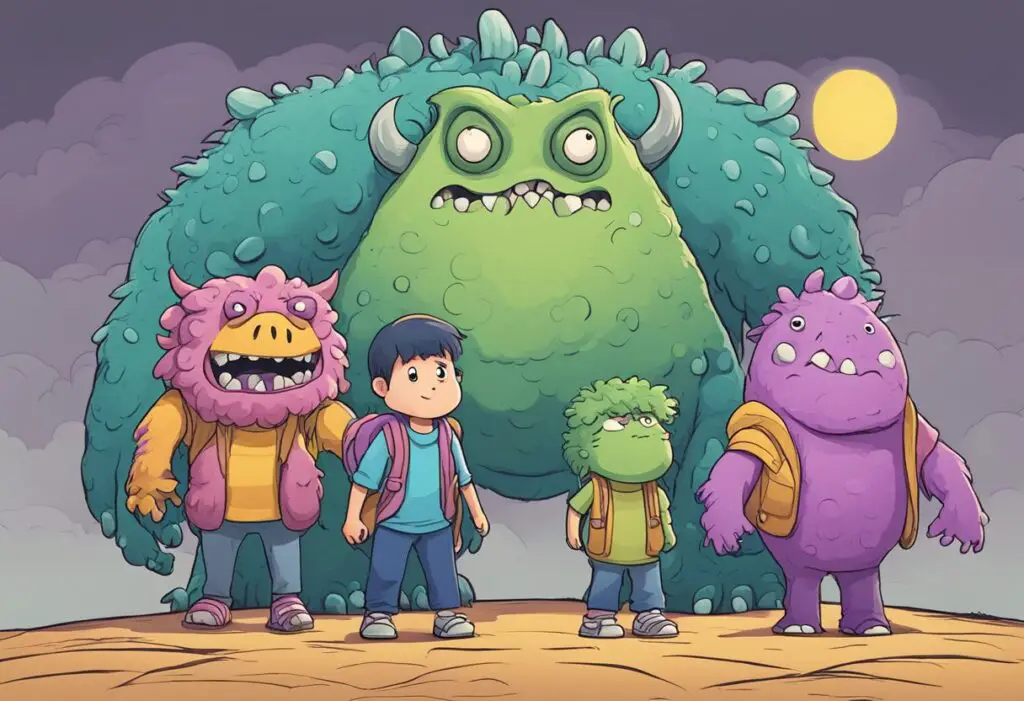So, you’re a parent or teacher looking to help your kids develop a growth mindset.
Well, you’ve come to the right place! In this article, we’ll explore the differences between a growth mindset and a fixed mindset and why it’s important to encourage a growth mindset in children.

First, let’s define what we mean by a growth mindset. Essentially, it’s the belief that your abilities and intelligence can be developed through hard work and dedication. On the other hand, a fixed mindset is the belief that your abilities and intelligence are fixed and cannot be changed. It’s easy to see why a growth mindset is more beneficial for children – it encourages them to embrace challenges and keep learning rather than giving up when things get tough.
But how can you help your kids develop a growth mindset? That’s what we’ll be exploring in this article. We’ll provide you with tips and activities to encourage a growth mindset in your children, as well as examples of how a growth mindset can benefit them in the long run. So, buckle up and get ready to learn all about growth mindset vs fixed mindset for kids!
The Battle of the Mindsets: Growth vs Fixed
Are you ready to enter the ring? In one corner, we have the unstoppable Growth Mindset. In the other corner, we have the stubborn Fixed Mindset. Who will come out on top?
The Unstoppable Growth Mindset
The Growth Mindset is like a superhero. It believes that you can learn and improve through hard work and dedication. It doesn’t care about your current abilities or intelligence. It only cares about your potential. With a Growth Mindset, you embrace challenges and mistakes as opportunities to learn and grow. You know that failure is not the end but a stepping stone towards success.
Carol Dweck, a famous psychologist, is the mastermind behind the Growth Mindset. She believes that your abilities and traits are not fixed but malleable. With a Growth Mindset, you can change your abilities and traits through effort and perseverance. You can become the best version of yourself.
The Stubborn Fixed Mindset
The Fixed Mindset is like a villain. It believes that your abilities and traits are set in stone. It doesn’t care about your potential. It only cares about your current abilities and intelligence. With a Fixed Mindset, you avoid challenges and mistakes because they threaten your sense of self-worth. You believe that failure is the end, not a beginning.
-

Bold Male Pride – Baseball Trucker Cap Celebrating Masculinity
21,00 € Select options This product has multiple variants. The options may be chosen on the product page -

Dad Bod Appreciation Gift Mug
16,00 € Add to cart -

Dad Bod, Bad Jokes Structured Baseball Cap
25,00 € Select options This product has multiple variants. The options may be chosen on the product page
If you have a Fixed Mindset, don’t worry. You can still change. You just need to start believing in the power of effort and perseverance. You need to embrace challenges and mistakes as opportunities to learn and grow. You need to stop thinking that your abilities and traits are set in stone. They are not. You are capable of more than you think.
In conclusion, the battle of the mindsets is not about who wins or loses. It’s about which mindset you choose to adopt. Will you be an unstoppable Growth Mindset superhero or a stubborn Fixed Mindset villain? The choice is yours.
The Mindset Battlefield: Classroom vs Home
As a parent, you play a crucial role in shaping your child’s mindset. However, the classroom environment can also have a significant impact on your child’s mindset. Here are some Classroom Conundrums and Home Happenings that can either promote or hinder a growth mindset in your child.
Classroom Conundrums
In the classroom, your child’s mindset can be influenced by the teacher’s focus on skills, health, motivation, resilience, hard work, setbacks, play, praise, tests, struggle, and progress. Teachers who promote a growth mindset encourage their students to view setbacks as opportunities to learn and grow rather than as failures. They also focus on the learning process rather than just the end result.
One great resource for teachers is the book “Mindset: The New Psychology of Success” by Carol Dweck. This book provides practical tips for promoting a growth mindset in the classroom, such as using posters that promote a growth mindset, modeling growth mindset behaviors, and praising effort over talent.
Home Happenings
At home, you can also promote a growth mindset in your child by focusing on skills, health, motivation, resilience, hard work, setbacks, play, praise, and progress. Encourage your child to set goals and work towards them, and celebrate their achievements along the way. Help them develop a love of learning by encouraging creativity, asking for help when needed, and promoting critical thinking.
Communication and collaboration are also important in promoting a growth mindset. Encourage your child to work with others and to seek out different perspectives. Model a growth mindset yourself by being open to feedback, taking on new challenges, and showing self-confidence in your own abilities.
In conclusion, promoting a growth mindset in your child requires a collaborative effort between the classroom and home environments. By focusing on the learning process, praising effort over talent, and encouraging a love of learning, you can help your child develop a growth mindset that will serve them well throughout their lives.
The Mindset Monsters: Fear, Shame, and Anxiety

As you learn about growth and fixed mindsets, you might encounter some mindset monsters that try to hold you back. These monsters are fear, shame, and anxiety. They can make you feel like you’re not good enough or that you’ll never be able to learn something new.
Fear
Fear is a sneaky monster that likes to hide in the shadows. It might tell you that you’re not smart enough to learn something new or that you’ll fail if you try. But fear doesn’t have to control you! You can face your fears and prove them wrong. Remember, everyone makes mistakes sometimes, and that’s okay. It’s all part of the learning process.
Shame
Shame is a tricky monster that likes to make you feel embarrassed or unworthy. It might tell you that you’re not good enough or that you don’t belong. But shame doesn’t have to control you! You can be proud of who you are and what you’re capable of. Remember, everyone has strengths and weaknesses, and that’s okay. It’s what makes you unique.
Anxiety
Anxiety is a nervous monster that likes to make you worry about the future. It might tell you that you’ll never be able to learn something new or that you’ll never be successful. But anxiety doesn’t have to control you! You can take things one step at a time and focus on the present moment. Remember, you can’t predict the future, but you can control how you approach it.
By recognizing these mindset monsters and learning how to overcome them, you can develop a growth mindset and achieve your goals. So don’t let fear, shame, or anxiety hold you back! You’ve got this!
The Mindset Magic: Neuroplasticity and Personality
You might think that your brain is set in stone, but it’s actually more like Play-Doh. That’s right, your brain can change and grow throughout your whole life, thanks to a little thing called neuroplasticity. It’s like magic, but with science!
Your personality is also not set in stone. Sure, you might be known for your love of math or your talent for drawing, but that doesn’t mean you can’t develop new skills or interests. It’s all about having a growth mindset, which means believing that you can improve and learn through perseverance and hard work.
Speaking of math, did you know that having a growth mindset can actually help you do better in math? It’s true! When you believe that your abilities can improve, you’re more likely to put in the effort to learn and practice. Plus, you’ll be more willing to take risks and make mistakes, which are essential for learning and growing.
So, how can you develop a growth mindset? Well, one way is to practice using growth mindset vocabulary. Instead of saying, “I can’t do this,” or “I’m not good at that,” try saying, “I can’t do this yet,” or “I’m not good at that, but I’m working on it.” It might sound cheesy, but it really works!
Another way to develop a growth mindset is to try out some growth mindset activities. For example, you could challenge yourself to learn a new skill, like playing an instrument or speaking a new language. Or, you could start a journal where you write down your goals and progress so you can see how far you’ve come.
Remember, your brain and your personality are not set in stone. With a growth mindset and a little bit of effort, you can achieve anything you set your mind to!
Conclusion: The Journey of Growth Mindset

Congratulations! You have embarked on the journey of developing a growth mindset for your child. You have learned about the difference between a growth mindset and a fixed mindset and how to help your child develop a growth mindset.
Remember, persistence is key! Encourage your child to keep trying, even when faced with challenges. As Stanford University psychologist Carol Dweck says, “Effort is what ignites that ability and turns it into accomplishment.”
Grit and passion for learning are also important. Help your child find their interests and encourage them to pursue them. This will help them develop a love for learning that will last a lifetime.
Colleges and employers are increasingly looking for individuals with a growth mindset. By helping your child develop a growth mindset, you are setting them up for success in the future.
Make a growth mindset a habit. Encourage your child to view mistakes as opportunities to learn and grow. Help them develop a positive attitude towards challenges and setbacks.
Movies and the environment can also play a role in developing a growth mindset. Watch movies that promote a growth mindset and surround your child with positive and optimistic people.
When faced with a difficult math problem, please encourage your child to approach it with a growth mindset. Instead of giving up, they can say, “I may not know the answer now, but I can learn and figure it out.”
Remember, even Einstein had to work hard to develop his abilities. With a growth mindset, your child can achieve anything they set their mind to.







